Reviews
Todd Haynes
USA, 2007
Credits
Review by Tom Huddleston
Posted on 21 November 2007
Source 35mm print
Related articles
Reviews I’m Not There by Jenny
Categories The Times BFI 51st London Film Festival
When Todd Haynes’ fractured take on the Dylan story was first mooted a couple of years back it was generally perceived, particularly among the Bob-worshipping community, to be a Very Bad Idea. The rumours circulated: Dylan was going to be played by a prepubescent child, by a 90-year-old black woman, or worse, by Richard Gere. The film would be based on Dylan’s songs but not his life, or it would tell his life story but contain none of his songs. And most threateningly of all, it would be directed by that lunatic who made such a mess of the David Bowie story with his kaleidoscopic homoerotic glittercamp epic, Velvet Goldmine.
Most of these rumours proved to be at least partially false, and the ones that didn’t have turned out not to be such hindrances after all. Richard Gere isn’t actually playing Bob Dylan, and nor is the child, the extraordinary Marcus Carl Franklin. Both of them - along with Ben Whishaw, Christian Bale, Heath Ledger and Cate Blanchett - play aspects of the subject, whether real or imagined, or both. And Todd Haynes (whose aforementioned Velvet Goldmine remains one of the most critically misunderstood and daring films of the last decade) turns out to be the perfect director, creating a film which is at once confounding and utterly appropriate, deconstructed but still deeply involving, a glorious fantasy rooted in real life, and dreams, and songs, and lies, and lofty ambition.
Because Dylan, like Bowie, was always an arch fantasist, he just managed to couch the playful, melodramatic aspects of his persona in more socially comprehensible and acceptable contexts and narratives: cowboy and outlaw, crusader and activist, reborn evangelist, misunderstood loner (as opposed to bisexual alien mime artist, which was bound to raise eyebrows). Dylan’s true persona is perhaps more oblique than any other major 20th century artistic figure, but he is a subtle chameleon, shifting without ever drawing attention to the process. And Haynes is more than aware of this, accepting the fakery and the truth in equal measure, never judging which is which.
Franklin plays Woody Guthrie, an 11-year-old juvenile home runaway exploring America by boxcar, living on his wits and his guitar picking. This is Dylan’s childhood fantasy, the one he sold to an eager public upon first achieving a measure of fame, never mind that it was the dawn of the 60’s and the hobo trail had been cold for over a decade, a fact Haynes is charmingly willing to riff upon (“Boy, don’t you know it’s 1959?”). Woody’s story is a glorious dream of freedom and childhood, ravishingly photographed in rich greens and browns, drawing upon a lot of Dylan’s early, falsified press pronouncements to construct this forthright, self contained, ludicrous character.
Christian Bale’s character, Jack Rollins, is perhaps the closest to Dylan himself, a young firebrand folksinger who vanishes from the 60’s scene only to return a decade later as a middle aged evangelist. Bale’s performance is the least showy of the six, appearing largely in ‘where are they now?’ TV footage, interviews and performances, adding weight and historical significance without ever becoming integral to the narrative. Similarly, Ben Whishaw’s Arthur Rimbaud appears mainly as punctuation, as Dylan the poet, a stream-of-consciousness Greek chorus in beat verse.
The two most well-rounded narratives are also the most interesting. Heath Ledger’s Robbie Clark is a movie actor whose rise to fame comes when he plays Jack Rollins in a hit 1965 movie—shortly afterwards, he meets and falls in love with Charlotte Gainsbourg’s beautiful Claire (a conflation of Suze Rotolo and Sara Dylan). They are married, move to Woodstock and have children, before fame gets in the way and Robbie begins to fragment. Despite sporting a Nashville Skyline beard and tousled curls, Ledger isn’t attempting any kind of Dylan impersonation: the singer’s private life has been kept so secret that to attempt such a performance would be as much of a shot in the dark as simply inventing a new character.
But the heart and soul of the movie is undoubtedly Cate Blanchett as Jude Quinn, or Bob model 65-67, the speed fuelled wild mercury Dylan of Don’t Look Back and Blonde on Blonde, the evasive, arch, snarky social commentator who simultaneously shunned the world and lapped up the praise. As a work of impersonation Blanchett’s performance is simply astounding: within 30 seconds you’ve forgotten she’s even (just like) a woman. Scowling from beneath a coal-black frightwig and impenetrable shades, she plays Quinn as an eternal prankster, still committed to the truth but finding newer, more difficult and challenging ways to speak it. The plot of this segment revolves around Dylan’s well documented battle with the British press, here represented by Bruce Greenwood’s terse, unconvinced Mr. Jones, who pursues the singer across the country in an attempt to ascertain whether or not he still ‘cares,’ a term for which Quinn demands, in true Dylan fashion, a concrete definition.
These scenes are the funniest, wildest and most entertaining in the film. It’s assumed we’re in Britain: country houses and crumbling music halls are very much in evidence, and at one point The Beatles appear as a gaggle of helium-voiced double speed lunatics, who frolic with Jude on the grass before vanishing in a flurry of teenage girls. But then Allen Ginsberg shows up, and there appears to be a scene in Warhol’s factory, with a barely recognisable Michelle Williams playing an indistinctly European Edie Sedgwick knockoff. But this sort of spatial confusion only adds to the film’s air of very Dylanish carelessness, throwing bad jokes after good (and there are some fantastic jokes, like Ginsberg’s shout to a statue of the crucified Jesus: “Boy, you better get down offa there, you’ll hurt yourself”) and generally avoiding verisimilitude at all costs.
The final section is the strangest, least explicable and inevitably the most divisive. Richard Gere plays Billy The Kid, who dodged Pat Garrett’s bullet all those years ago and has since been hanging out on the fringes of a remote Western town. The connection to the supposed subject is at it’s most tenuous here: Dylan obviously starred in Peckinpah’s Billy The Kid movie, but his part in it was small, and its influence on him debatable. But as the segment progresses things come into focus, at least a little. The town is populated by Dylan characters, engaging in Dylanish activities, like packing up meat (sweet). Woody reappears, lost and alone, and Mr. Jones resurfaces as a vindictive, wheelchair-bound Garrett, threatening to build a freeway through this seemingly 19th century hamlet. It’s all very psychedelic, in a Basement Tapes sort of way, a lot of outlaw chic and rustic Americana, and the expiration of the hippie dream. Gere attempts to lead a revolt, and winds up in jail, before being busted out by an ironmonger and fleeing on a passing train, bringing us full circle back to the hobo jungle.
There’s too much Dylan to fit into one movie. Even with so many elements jostling for position, there’s far more left out: no Gaslight, no Rolling Thunder, no late 80’s rebirth, no mid 90’s heart attack. Haynes goes for the hits, and definitely prefers to print the legend: poor old Pete Seeger is shown chopping at the Newport power cables, an event it has been fairly well established never happened. And the ‘Judas’ stuff is overcooked, too: we’re treated to shots of entire audiences in revolt, waves of horrified booing, when contemporary footage shows that a clear majority were happy to follow Dylan wherever his muse might lead. Such exaggerations are not necessarily problematic, but there is occasionally a feeling that Haynes is a little too willing to write from received wisdom, as opposed to the truth, however fragmented.
But what can’t be argued with is the music. The release of the film’s soundtrack has sparked concern, featuring covers of the great man’s back catalogue by luminaries like Calexico, Yo La Tengo and Sonic Youth alongside criminal massacres by the likes of Eddie Vedder and Jack Johnson. But thankfully this music only appears sporadically, the vast majority of the songs heard are original Dylan, and wonderfully chosen. Haynes is clearly a big Blonde on Blonde fan (unlike your humble reviewer), and it’s 60’s Dylan that dominates, perhaps unsurprisingly. But the director does manage to steer clear of the obvious (no ‘Blowin’ In The Wind’ or ‘Mr. Tambourine Man’ here), and there are some extraordinary moments of musical and visual collision and collusion: the vaudevillian ‘Ballad of a Thin Man’ sequence, clearly inspired by Performance; the strains of ‘Sad Eyed Lady’ drifting in as Jude lies mangled in a ditch; the Mona Lisa floating across the screen as ‘the ghost of electricity howls in the bones of her face.’
Such moments are what make I’m Not There among the most exhilarating, startling films of the year: this the closest narrative cinema gets to actually becoming music, giving us little half-heard snatches of a life, scattered verses building a story which, though far from complete, is endlessly compelling. And there is so much here it becomes dizzying, leaping from character to character, era to era, joy to sadness, connectedness to isolation, love to loss, fantasy to reality and back again several times inside a minute. Perhaps a more complete, fully realised picture of Dylan’s life might one day be told, hopefully long after he’s gone. But it’s impossible to imagine a better portrait of the man as his creations, as an artist and his art inextricably intertwined, as a real man who invented himself every day, as perhaps we all do.
More The Times BFI 51st London Film Festival
-
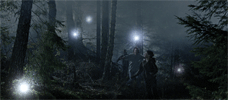
Island of Lost Souls
2007 -

Garage
2007 -
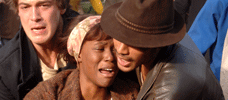
Exodus
2007 -
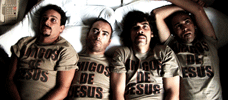
Friends of Jesus
2007 -
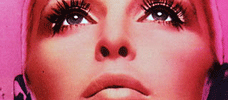
We Want Roses Too
2007 -

The Trap
2006 -

Captain Ahab
2007 -
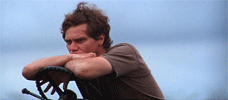
Shotgun Stories
2007 -

Savage Grace
2007 -

The Assassination of Jesse James by the Coward Robert Ford
2007 -

The World Unseen
2007 -

Things We Lost In The Fire
2007 -

Lions for Lambs
2007 -

Talk to Me
2007 -

Redacted
2007 -

Battle For Haditha
2007 -

Chaotic Ana
2007 -
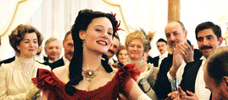
Angel
2007 -

Juno
2007 -

Fay Grim
2006 -

Reservation Road
2007 -
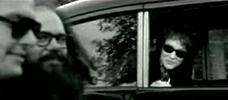
I’m Not There
2007
We don’t do comments anymore, but you may contact us here or find us on Twitter or Facebook.



